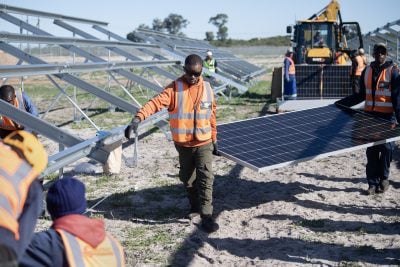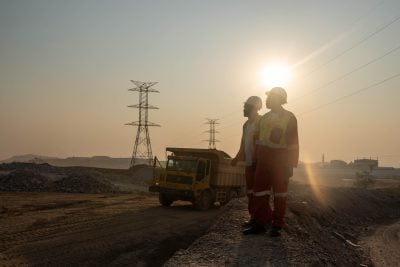China has acted quickly to finance two multibillion-dollar tenders in Kenya and construction of a multitude of others. While this has angered other international and local investors, they have been slow to put their money where their mouths are. Aamera Jiwaji looks at the increasing fractiousness within Kenya’s construction industry.
A 21-gun salute at Kenya’s State House welcomed the 500-strong Chinese delegation in mid-May, and over the next three days, a record 15 agreements were signed between Nairobi and Beijing.
Various sectors attracted China’s attention, including aviation, agriculture, energy, manufacturing, technology and wildlife, but it was infrastructure that was most keenly watched. China’s Prime Minister Li Keqiang did not disappoint. He and Kenya’s President Uhuru Kenyatta signed two infrastructure related deals worth a combined $4.5bn.
The first was a $3.8bn (KSh 332.5bn) financing for the standard-gauge railway that will connect Kenya’s port city of Mombasa to Burundi’s capital Bujumbura through Kampala, Kigali and Juba, the ground breaking for which took place in November. The second financed the $743m (estimate from 2008–2012 Strategic Plan for Tana and Athi River Development Authority) Grand Falls Multipurpose Dam Project in Mwingi in Eastern Kenya.
Both projects will help to revive the failing fortunes of the multibillion-dollar Lapsset (Lamu Port, South Sudan and Ethiopia Transport) corridor, but the deals are overshadowed by concerns about China’s monopolistic control over Kenya’s megaprojects.
The need for African economies to prioritise infrastructure was emphasised by Head of the IMF, Christine Lagarde, in June when she urged Africa to spend $93bn a year to bring its economies up to speed.
Lapsset is one of the key infrastructure projects in Kenya’s development blueprint Vision 2030. It includes a port at Manda Bay in Lamu; a 1,500km standard-gauge railway line to the Ethiopian and South Sudanese capitals; a road network and oil pipeline connecting Lamu with Southern Sudan and Ethiopia (and now Uganda); an oil refinery in Baragoni; and airports and resort cities in Lamu, Isiolo and Lake Turkana.
It will be the country’s second transport and economic corridor, and will facilitate an equatorial land bridge connecting the Indian Ocean to the Atlantic.
The project is also hoped to revive the country’s growth, which stood at 4.7% in 2013 according to the 2014 Economic Survey, falling short of a 5.5% prediction.
The Lapsset Corridor Development Authority (LCDA) suggests it will contribute between 8% to 10% of GDP once investors come on board, especially since projects in poorly developed areas yield higher growth figures.
Ground breaking on stage one – the initial three berths of the planned 32 berths at Manda Bay – took place in March 2012 but a long silence followed, with the finger of blame pointed at the messy land ownership situation in Lamu, the 2013 national elections and fighting in Isiolo. Critics have, however, questioned whether the project stalled because of a funding shortfall.
At the time of its launch, Lapsset was costed at $30bn – equivalent to nearly half the country’s 2012 GDP. The government undertook to fund 25%, and has since allocated $48m to the roads, railway and first three berths at the port in the hope that it will attract private sector participation in the remaining components.
According to LCDA CEO, Silvester Kasuku, the port building and police station in Lamu are 95% complete.
Locally based NGO, Save Lamu, confirms that offices for power generation company KenGen, and an access road from Lamu’s main road to the port site at Kililana have also been completed.
Other Lapsset roads have reached a completion rate of between 7% and 43%, according to LCDA. The power connection for the port has also been completed. Lengthening of the Lamu-Manda Island Airport runway is finished, and the Isiolo Airport will be operationalised in mid-2014. Dredging for the first three berths in Lamu is expected to begin in June.
The high level of government activity has excited commercial banks and in the last year Equity, DTB, ABC and Gulf opened branches on Lamu island and the mainland.
Want to continue reading? Subscribe today.
You've read all your free articles for this month! Subscribe now to enjoy full access to our content.
Digital Monthly
£8.00 / month
Receive full unlimited access to our articles, opinions, podcasts and more.
Digital Yearly
£70.00 / year
Our best value offer - save £26 and gain access to all of our digital content for an entire year!
 Sign in with Google
Sign in with Google 


